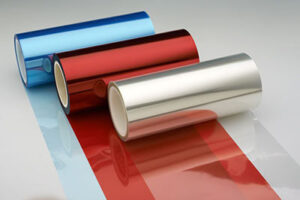What Are the Different Types of Adhesive Release Liners?
2021/05/28

Release liners are crucial elements in adhesive technologies, primarily utilized as a carrier and protective covering for adhesive substances. They are designed to release from the adhesive when the time comes to apply the adhesive to a surface. There are several different types of adhesive release liners, with variations based on the materials used, the release coating, and the production process. Here are some of the most common types:
Silicone release liners utilize a silicone-based release agent which yields a very smooth release characteristic, meaning that when separating the liner and the adhesive, there is very little resistance encountered. These liners are especially suited for adhesive materials requiring a high degree of slip or easy release. For instance, labels, stickers, medical patches, or other applications that require frequent or repeated removal may opt for silicone release liners. In the manufacturing process, one (sometimes both) side of the liner is coated with the silicone release agent, whose chemical properties allow the adhesive to be easily separated without compromising its stickiness.

Non-silicone release liners use a non-silicone release agent. Silicone release agents can sometimes cause issues during subsequent processes such as printing, coating, or metalizing as the silicone may leach into and contaminate other materials, thereby affecting their performance or interactions with other substances. In such cases, non-silicone release liners are used. For example, when a product requires printing after the liner is removed and you do not want the print ink to be contaminated by silicone, you might choose non-silicone release liners. They offer a release performance similar to silicone release liners, but their unique release agent allows them to avoid problems caused by silicone.
Fluorosilicone release liners are a specialized type of release liner mainly used in applications requiring chemical resistance, high temperature, and low surface energy. They employ a fluorinated silicone release agent, offering exceptional chemical stability and heat resistance, maintaining stable performance under extreme conditions. Application examples include:
- Automotive and Aerospace: Given these industries often require products to operate under high temperatures or harsh chemical environments, fluorosilicone release liners can provide a strong adhesion while withstanding these extreme conditions. For example, sealing applications in aircraft or car engines might need to maintain their performance under the influence of high temperatures and chemical agents like fuel or lubricants.
- Chemical Processing: In chemical processes involving strong acids, alkalis, or organic solvents, fluorosilicone release liners can offer stable release performance. For instance, in chemical processes that may need strong adhesive tapes to secure equipment or materials, fluorosilicone release liners prove to be highly useful.
- Medical Devices: Medical devices often require adhesive tapes, for securing equipment or patient care. These tapes may come in contact with a variety of chemical agents, such as disinfectants or drugs. In such cases, adhesive tapes made with fluorosilicone release liners can ensure a stable stickiness under the influence of these chemicals.
Related Products: Fluorosilicone Release Liner
Anti-static release liners are designed to resist the buildup of static electricity, which is vital for many applications involving high speed or automated operations. In these situations, static could lead to uneven release or affect the correct positioning of the tape. Anti-static release liners ensure stable release performance in these applications. Moreover, they can prevent static from affecting the manufacturing process or final product. For example, static may attract dust or other particulates, leading to contamination of the product surface. Therefore, for applications requiring static control, like electronics manufacturing or printing, anti-static release liners are the ideal choice. The production of anti-static release liners might involve the addition of antistatic agents or the use of specialized coating processes to ensure anti-static performance.
Category
